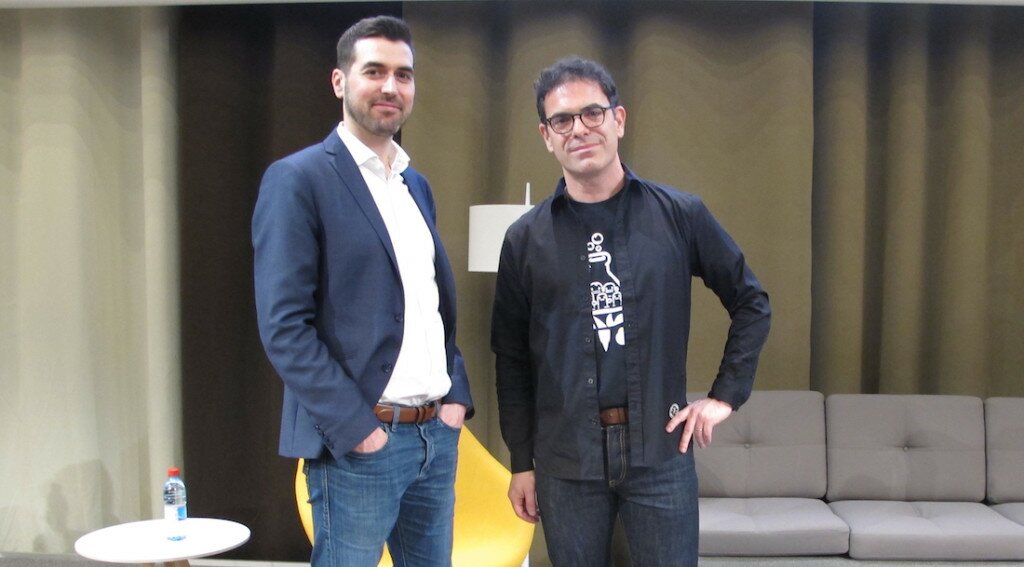The persuasive power of gamification in business
Life is messy: rules change, plans disintegrate and people cheat. In a world without roadmaps or guarantees, games provide a refuge with defined guidelines, measurable progress and fair conditions.
Game developers have long understood how to draw on human nature to hook audiences one level at a time. Over a decade ago, the business world started realizing that the same gaming techniques that kept people playing, could also spur engagement in the real world.
“We are in a transitional phase where we still call this gamification, but that’s reducing the concept. It’s really human-focused design,” explained Dominique Mangiatordi, Founder and CEO of Royal App Force and presenter at lux future lab’s Gamification FinTechMeets. “It’s not the games themselves that are important, it’s the techniques they use to stimulate collaboration.”
Anyone who has witnessed a gamer in the zone knows the power of play. Developers have mastered the art of attracting players, making them feel uniquely capable and luring them down the path toward mastery.
“Game developers are just better than we are in the software business.”
Because gamification is informed by human desires, it is universally applicable. Elements of game mechanics, such as points, badges and leaderboards, prove effective across industries and business lines.
“Game developers are just better than we are in the software business. I’m talking more with gamers than with teachers or researchers,” said Mangiatordi, author of Managers, faites vos jeux, a book on the uses of gamification in business.
Motion-S, a lux future lab startup that creates mobility profiles using new technology, stumbled upon the world of gamification in an attempt to make a boring task fun.
“We used it by accident, because it works.”
“We used it by accident, because it works,” said Raphael Frank, Cofounder and COO of Motion-S. “We needed to get drivers to use a mobility app, which are usually very dry. Who wants to download an app and record their trips?”
Their goal — to create individual mobility profiles — hinged upon keeping users active on the application. Regularly updated badges, missions and challenges proved to be the ticket to longevity.
“Users could have fun interactions, win things, see their progress and interact with other drivers. We saw that frequent, short-term rewards were most effective, so we changed from large monthly prizes to smaller weekly prizes,” added Frank, who was also a FinTechMeets speaker.
Gamification is everywhere, encouraging us to walk more (Fitbit), update our profile (LinkedIn), brush our teeth (Kolibree), manage our finances (Mint) and achieve our goals (SuperBetter). It has boosted the potential for engagement in a variety of fields, from management, to nutrition, to learning.
“All industries can benefit. We’ve used it to help a retailer motivate customers to eat healthier. We can use it to help businesses motivate drivers of company cars to decrease their CO2 footprints,” Frank said. “There are always gamification elements you can incorporate. I recommend that others try using it.”
Now, the challenge is to remember that tools can never replace real human interaction in a collaborative environment.
When considering the psychology of gamification, Mangiatordi applies Richard Bartle’s four gamer types to professional profiles. The socializers, driven by human interaction and popularity, and the achievers, who seek progress and development, make up about 90% of the population.
Roughly 10% are killers, who crave competition and winning, and explorers, who want to make discoveries and solve problems. Successful games, such as World of Warcraft, manage to appease all four groups.
Leveraging gamification in management requires more than badges and rankings. A company’s understanding of these profiles lets it avoid common pitfalls. An overemphasis on competition, for example, may satisfy the killers, but will leave the majority of employees demotivated.
“It’s important to focus on achievement first and then decide when to use competition and collaboration. Define levels and objectives instead of titles and sales, and celebrate the improvement of skills,” Mangiatordi said.
In an uncertain world, transparency is a key prerequisite for gamification. Year after year, US-based consulting firm Bain & Company ranks as a top employer. Like Google, it provides clearly defined and standardized career paths for every employee, letting them progress from one level to another without emphasizing competition.
Whether integrated into a viral marketing campaign, an at-home parenting tool or a management solution, gamification ultimately helps achieve goals through engagement. “Engagement means productivity. Playing games is not gamification, because in a game the motivation is intrinsic. Gamification is most often used when the motivation is extrinsic — like when the work is repetitive — to compensate for the lack of engagement. That’s the difference,” Mangiatordi added.
Since the term gamification was first coined, newspapers and tech blogs have debated its legitimacy, wondering whether it was a gimmick created by marketing agencies or a buzzword that would disappear with the season’s fads. Thanks to innovations in mobile technology and a new generation of game-friendly managers, gamification is everywhere.
According to Mangiatordi the movement has come a long way, since its early days: “The big mistakes are behind us. Now, the challenge is to remember that tools can never replace real human interaction in a collaborative environment.”

